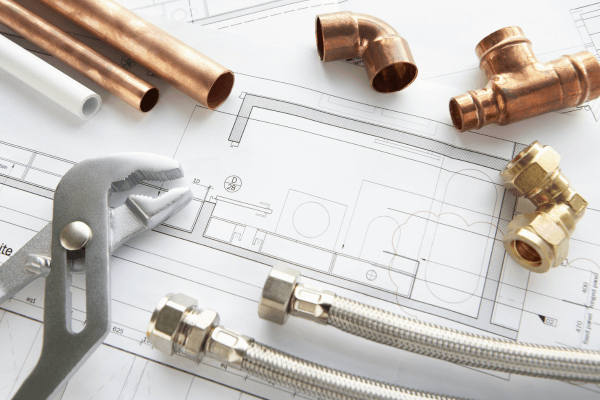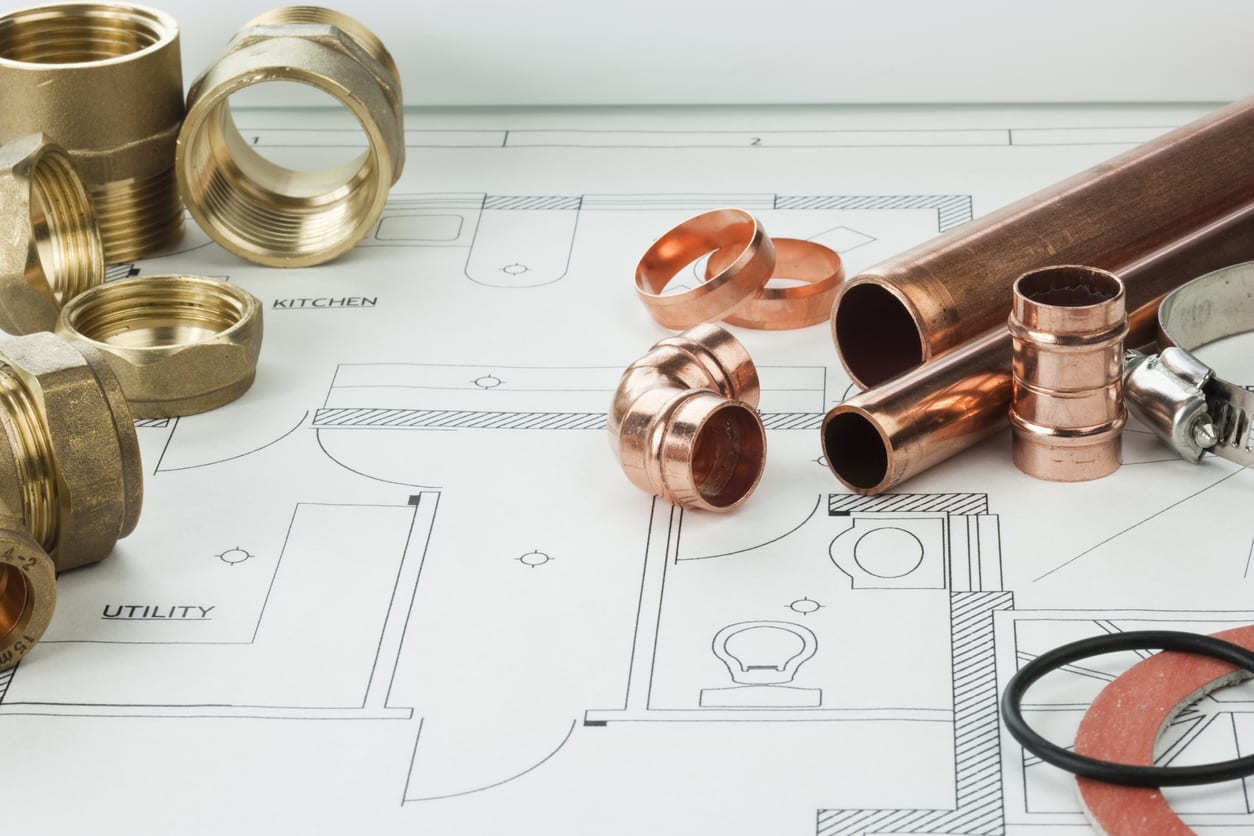The Basics of Your Home's Plumbing System Anatomy
The Basics of Your Home's Plumbing System Anatomy
Blog Article
Nearly everybody may have their private theory when it comes to Plumbing Installation 101: All You Need to Know.

Comprehending how your home's plumbing system functions is essential for each homeowner. From supplying tidy water for alcohol consumption, food preparation, and bathing to securely removing wastewater, a well-kept pipes system is vital for your household's health and convenience. In this extensive guide, we'll check out the complex network that composes your home's plumbing and offer tips on maintenance, upgrades, and dealing with common issues.
Intro
Your home's pipes system is greater than simply a network of pipes; it's an intricate system that ensures you have access to clean water and effective wastewater elimination. Knowing its parts and exactly how they work together can assist you stop expensive repair work and guarantee everything runs efficiently.
Fundamental Parts of a Plumbing System
Pipes and Tubing
At the heart of your pipes system are the pipes and tubes that lug water throughout your home. These can be made from different products such as copper, PVC, or PEX, each with its advantages in regards to longevity and cost-effectiveness.
Components: Sinks, Toilets, Showers, and so on.
Fixtures like sinks, toilets, showers, and tubs are where water is utilized in your home. Recognizing exactly how these fixtures attach to the plumbing system aids in identifying problems and intending upgrades.
Shutoffs and Shut-off Points
Shutoffs control the circulation of water in your plumbing system. Shut-off valves are essential throughout emergencies or when you require to make repair work, allowing you to isolate parts of the system without interfering with water flow to the entire residence.
Water System System
Main Water Line
The primary water line connects your home to the local supply of water or a private well. It's where water enters your home and is dispersed to various fixtures.
Water Meter and Stress Regulator
The water meter actions your water usage, while a stress regulatory authority ensures that water moves at a risk-free stress throughout your home's plumbing system, protecting against damage to pipelines and fixtures.
Cold Water vs. Warm water Lines
Comprehending the distinction between cold water lines, which supply water straight from the primary, and warm water lines, which bring warmed water from the water heater, aids in troubleshooting and planning for upgrades.
Water drainage System
Drain Pipeline and Traps
Drain pipes carry wastewater far from sinks, showers, and bathrooms to the sewage system or septic tank. Catches prevent drain gases from entering your home and also trap debris that could trigger obstructions.
Ventilation Pipelines
Ventilation pipes allow air right into the drainage system, avoiding suction that could slow drain and trigger traps to empty. Correct air flow is essential for maintaining the integrity of your plumbing system.
Value of Correct Drainage
Guaranteeing appropriate drainage avoids backups and water damage. Frequently cleaning up drains pipes and preserving catches can prevent expensive repair services and expand the life of your pipes system.
Water Furnace
Sorts Of Water Heaters
Water heaters can be tankless or traditional tank-style. Tankless heaters heat water as needed, while containers save warmed water for prompt usage.
Exactly How Water Heaters Link to the Plumbing System
Understanding how water heaters connect to both the cold water supply and hot water circulation lines assists in identifying problems like insufficient hot water or leaks.
Upkeep Tips for Water Heaters
Consistently purging your hot water heater to remove sediment, checking the temperature level setups, and examining for leaks can expand its life-span and enhance energy effectiveness.
Typical Plumbing Problems
Leaks and Their Reasons
Leaks can happen due to maturing pipelines, loosened installations, or high water pressure. Dealing with leaks quickly prevents water damages and mold growth.
Obstructions and Obstructions
Obstructions in drains pipes and toilets are often brought on by flushing non-flushable things or an accumulation of grease and hair. Using drainpipe screens and bearing in mind what decreases your drains can protect against blockages.
Signs of Plumbing Troubles to Look For
Low tide pressure, slow-moving drains pipes, foul odors, or uncommonly high water expenses are indications of possible plumbing issues that need to be dealt with quickly.
Plumbing Upkeep Tips
Regular Inspections and Checks
Arrange yearly plumbing assessments to catch problems early. Seek indications of leaks, corrosion, or mineral build-up in faucets and showerheads.
DIY Upkeep Tasks
Easy jobs like cleaning faucet aerators, looking for bathroom leakages using color tablet computers, or insulating subjected pipelines in cold climates can protect against major plumbing concerns.
When to Call an Expert Plumber
Know when a plumbing concern requires professional expertise. Attempting intricate repair work without appropriate expertise can lead to more damages and greater repair expenses.
Updating Your Pipes System
Factors for Updating
Upgrading to water-efficient fixtures or changing old pipelines can boost water quality, decrease water expenses, and boost the worth of your home.
Modern Plumbing Technologies and Their Benefits
Explore technologies like wise leak detectors, water-saving bathrooms, and energy-efficient hot water heater that can conserve money and reduce environmental effect.
Expense Considerations and ROI
Determine the in advance costs versus long-term savings when considering plumbing upgrades. Many upgrades pay for themselves through minimized energy expenses and less repair services.
Ecological Effect and Preservation
Water-Saving Fixtures and Appliances
Setting up low-flow faucets, showerheads, and bathrooms can dramatically reduce water usage without sacrificing efficiency.
Tips for Reducing Water Usage
Easy practices like fixing leakages without delay, taking shorter showers, and running full tons of laundry and dishes can save water and reduced your energy expenses.
Eco-Friendly Plumbing Options
Think about lasting plumbing products like bamboo for flooring, which is durable and environmentally friendly, or recycled glass for counter tops.
Emergency Readiness
Actions to Take During a Plumbing Emergency situation
Know where your shut-off valves lie and exactly how to turn off the water supply in case of a ruptured pipeline or major leak.
Importance of Having Emergency Situation Get In Touches With Useful
Maintain get in touch with information for regional plumbings or emergency situation solutions readily offered for quick response throughout a pipes crisis.
Do It Yourself Emergency Fixes (When Applicable).
Short-lived repairs like using air duct tape to spot a leaking pipeline or putting a pail under a leaking tap can reduce damages up until a specialist plumbing technician arrives.
Verdict.
Recognizing the anatomy of your home's pipes system empowers you to keep it effectively, conserving time and money on fixings. By complying with regular maintenance regimens and staying informed about contemporary pipes technologies, you can guarantee your pipes system operates effectively for many years ahead.
HOW YOUR PLUMBING SYSTEM WORKS
Which Pipes Do What?
Blue lines = fresh water supply entering the building
Red lines = hot water supply entering the building
Grey lines = pipes carrying waste away from the building and venting pipes carrying gases away from the building (through the roof)
YOUR MAIN PLUMBING SYSTEMS
There are two main plumbing systems that support your home s basic plumbing needs one that brings clean water into your home, and one that sends dirty water away from your home. Connected to the toilet, bath, shower, and other faucets in your home, these two systems keep your water flowing in the right directions.
ACCESSING FRESH WATER
Fresh and clean water is brought into your home through the main water supply line . Filtered through one pipe, this water is pressured to flow into the various fixtures in your home at any given time.
This water can be sourced from a well located on your property, a pond or river (mostly cottages), or, as in most cases, from the city s municipal water treatment centre. However, it is important to note that water that is untreated, such as the water siphoned from ponds or rivers, may not be safe to drink. Personal water supplies always need to be treated for hardness and contaminants before consumed.
MUNICIPAL WATER SUPPLIES
Improve taste and odour
Remove sediment
Eliminate hardness
Reduce chlorine
COLD WATER SUPPLY VS. HOT WATER SUPPLY
Cold water flows into your home or building through the service line, which then distributes hot or cold water to your fixtures. This line is most commonly run through a central column that runs floor to floor. Hot water runs in short and straight pipes as the longer the pipeline, the more heat that will be lost in the transfer. Having shorter pipes also allows residents to access hot water more quickly.
WASTE WATER SYSTEM
Your wastewater system is divided into two parts pipes that send wastewater away from your home and venting pipes that send sewer gas away from your home. Sewage water travels through pipes that flush the water and waste towards local sewers that are operated and managed by your city or town. Most sewer systems rely on gravity to move the wastewater to where it needs to go.
The further away from your toilet or sink, the larger wastewater pipes become. This allows for waste to be disposed of from various parts of your home or business at once without pipe blockages. The angle and flow of these pipes are also essential for keeping your waste pipes clear of build up.
https://harrisplumbing.ca/how-your-home-plumbing-system-works/

HOW YOUR PLUMBING SYSTEM WORKS
Which Pipes Do What?
YOUR MAIN PLUMBING SYSTEMS
There are two main plumbing systems that support your home s basic plumbing needs one that brings clean water into your home, and one that sends dirty water away from your home. Connected to the toilet, bath, shower, and other faucets in your home, these two systems keep your water flowing in the right directions.
ACCESSING FRESH WATER
Fresh and clean water is brought into your home through the main water supply line . Filtered through one pipe, this water is pressured to flow into the various fixtures in your home at any given time.
This water can be sourced from a well located on your property, a pond or river (mostly cottages), or, as in most cases, from the city s municipal water treatment centre. However, it is important to note that water that is untreated, such as the water siphoned from ponds or rivers, may not be safe to drink. Personal water supplies always need to be treated for hardness and contaminants before consumed.
MUNICIPAL WATER SUPPLIES
COLD WATER SUPPLY VS. HOT WATER SUPPLY
Cold water flows into your home or building through the service line, which then distributes hot or cold water to your fixtures. This line is most commonly run through a central column that runs floor to floor. Hot water runs in short and straight pipes as the longer the pipeline, the more heat that will be lost in the transfer. Having shorter pipes also allows residents to access hot water more quickly.
WASTE WATER SYSTEM
Your wastewater system is divided into two parts pipes that send wastewater away from your home and venting pipes that send sewer gas away from your home. Sewage water travels through pipes that flush the water and waste towards local sewers that are operated and managed by your city or town. Most sewer systems rely on gravity to move the wastewater to where it needs to go.
The further away from your toilet or sink, the larger wastewater pipes become. This allows for waste to be disposed of from various parts of your home or business at once without pipe blockages. The angle and flow of these pipes are also essential for keeping your waste pipes clear of build up.
https://harrisplumbing.ca/how-your-home-plumbing-system-works/
I ran across that review on The Inner Workings of Your Home's Plumbing when doing a lookup on the internet. Sharing is good. You just don't know, you may very well be helping someone out. Thank you for being here. Don't hesitate to stop by our website back soon.
Go Company Report this page